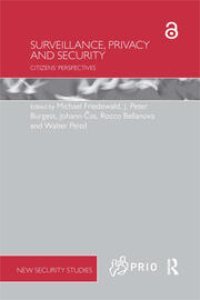by Rafael A. Mangual
After a long period of continuous violent-crime declines throughout the U.S.—spanning from the mid-1990s through the early 2010s—many American cities are now seeing significant increases in violence. Nationally, in 2015 and 2016, murders rose nearly 11% and 8%, respectively.[1] The national homicide rate declined slightly in 2017 and 2018, before ticking upward in 2019.[2] In 2020, the nation saw its largest single-year spike in homicides in at least 100 years—which was followed by another increase in murders in 2021, according to CDC data and FBI estimates.[3] In the last few years, a number of cities have seen murders hit an all-time high.[4] In addition to homicides, the risk of other types of violent victimizations rose significantly, as well.[5] While various analyses estimated a slight decline in homicides for the country in 2022,[6] many American cities still find themselves dealing with levels of violence far higher than they were a decade ago. While violent crime—particularly murder—is the most serious due in large part to its social costs,[7] there have also been worrying increases in crimes such as retail theft,[8] carjacking,[9] and auto theft,[10] as well as in other visible signs of disorder in public spaces (from open-air drug use and public urination to illegal street racing and large-scale looting and riots).[11] Although several contributing factors are likely, this general deterioration in public safety and order was unquestionably preceded and accompanied by a virtually unidirectional shift toward leniency and away from accountability in the policing, prosecutorial, and criminal-justice policy spaces. That shift is evidenced by, among other things, three major trends in enforcement: A 25% decline in the number of those imprisoned during 2011–22[12], A 15% decline in the number of those held in jail during 2010–21[13], A 26% decline in the number of arrests effected by law-enforcement officers during 2009–19[14]. Notable contributing factors to the decline in enforcement include: A sharp uptick in public scrutiny and interventions—in the form of investigations and legal action taken by state attorneys general and the federal Department of Justice—against local law-enforcement agencies[15]. The worsening of an ongoing police recruitment and retention crisis, particularly in large urban departments[16]. The electoral success of the so-called progressive prosecutor movement, which, by 2022, had won seats in 75 jurisdictions, representing more than 72 million U.S. residents[17]. Perhaps most important, the adoption of a slew of criminal-justice and policing reform measures at all levels of government[18]. Those who are skeptical of the criminal-justice reform movement have devoted most of their efforts to arguing against the movement’s excesses and explaining why it would be unwise to enact certain measures.[19] Less effort has been devoted to the extremely important task of articulating a positive agenda for regaining what has been lost on the safety and order front.[20] This paper seeks to add to that positive agenda for safety by proposing three model policies that, if adopted, would help, directly and indirectly, stem the tide of rising crime and violence, primarily by maximizing the benefits that attend the incapacitation of serious criminals (especially repeat offenders) and by encouraging the collection and public reporting of data that can inform the public about the downside risks that are glossed over by decarceration and depolicing activists. The three policies proposed here, which draw on policies proposed and adopted throughout the country in recent history: Modified “Three Strikes”—Creating a points system for various offenses as well as a points threshold that will trigger a mandatory minimum sentencing enhancement, in order to improve deterrence for those beneath the threshold and to maximize incapacitation for those who step over it. “Truth in Sentencing”—Setting a floor for how much of a given sentence must be served before a convicted felon becomes eligible for initial release into community supervision, in order to maximize incapacitation for those who have been convicted of a serious offense and sentenced to a term of imprisonment. “Data Transparency”—Identifies several types of crime-related data that jurisdictions will be encouraged to collect and report in a standardized manner to address the problem of making and evaluating policing and criminal-justice policies without the benefit of reliable, relevant data. These model policies should be viewed flexibly; policymakers should see them as starting points, feeling free to make changes that reflect the various concerns and idiosyncrasies specific to their respective jurisdictions.
New York: Manhattan Institute, 2024. 19p.








